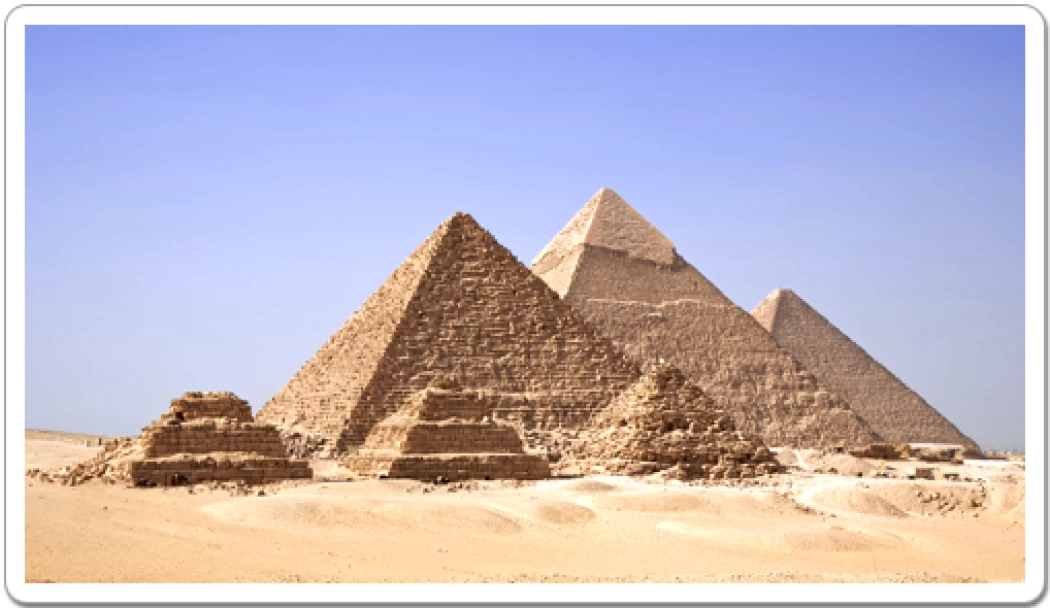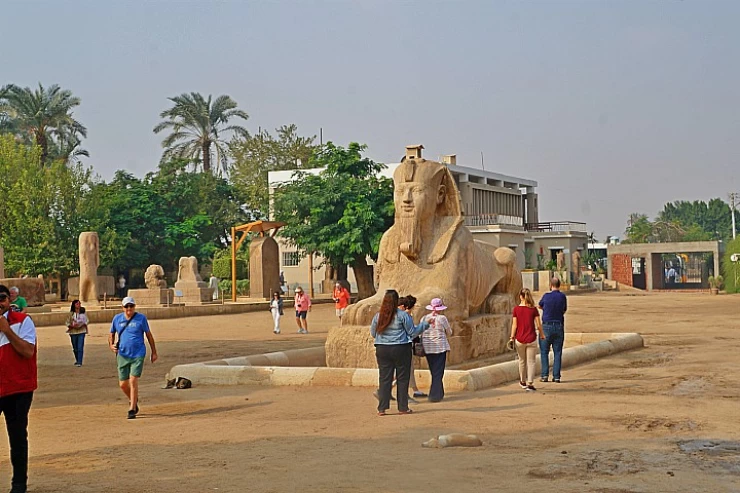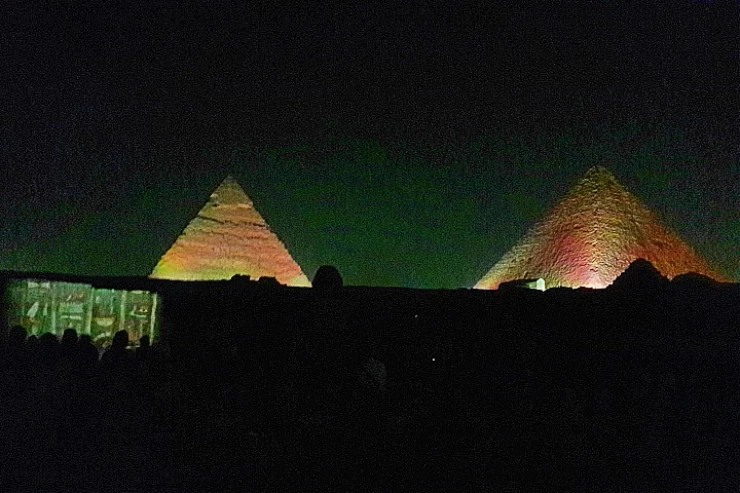
The Little Pyramids of the King Khufu Collection
The Little Pyramids of the King Khufu Collection
Known as the ‘Pyramids of the Queens’, the secret to their construction is that ancient Egypt was described as a patriarchal society, and almost every monument and giant statue in the country was dedicated to males, and these three pyramids are believed to have been built for Pharaoh's queens.
It is believed that these three pyramids were built for the pharaoh's queens. For example, travellers visiting Abu Simbel in southern Egypt are impressed by the four huge statues of Pharaoh Ramses II, but look at the base and see the small statues of his wife, Queen Nefertari.
Side pyramids: Side pyramids are divided into two sections: The first are special pyramids for the burial of queens, and this type of pyramids are found inside the burial chamber and the sarcophagus, in addition to some of the artefacts that were placed for the burial, and we have many side pyramids of queens whose names are known. Sometimes, as in the Middle Kingdom, the number of such pyramids within the king's collection reaches up to nine pyramids for queens.
The other type is the doctrinal pyramid, and the first evidence of this is the southern tomb of King Djoser. It revealed the doctrinal pyramid of King Khufu, on the southeast side of the pyramid, and that the shape of the side pyramid is a replica of the original pyramid, especially the interior design.
There are many opinions about the function of the side pyramid, including that it represented the king as the king of the Upper Egyptian face, while the other pyramid represented the king of the Sea Face. It was also said that it was dedicated to the burial of royal crowns, the cult of the sun, or the burial of canopic vessels containing the king's entrails.
Pyramid G1a, the northernmost of the pyramids, is the secondary tomb of Queen Hattab Haras I, one of Pharaoh Menkaure's wives. It was originally 30 meters high but has been largely destroyed, losing most of its height and now only about a third of its original height.
The second pyramid (G1b) is unclear, with some suggesting it belonged to Queen Meret and others to Gedifer's unnamed mother. It has underground passages and a burial chamber, but is poorly preserved, and is located about 10 meters away from the G1a pyramid.
The southernmost of the pyramids, G1c is the most complete of the three pyramids (although it is unlikely to have been fully completed), is attributed to Queen Henutsen and is only about 4 metres away from G1b. The pyramid has three mastaba-like step sections, and although the pyramid is also a ruin, it still retains some of its soft limestone shell, and there is also a limestone lining the burial chamber.
















